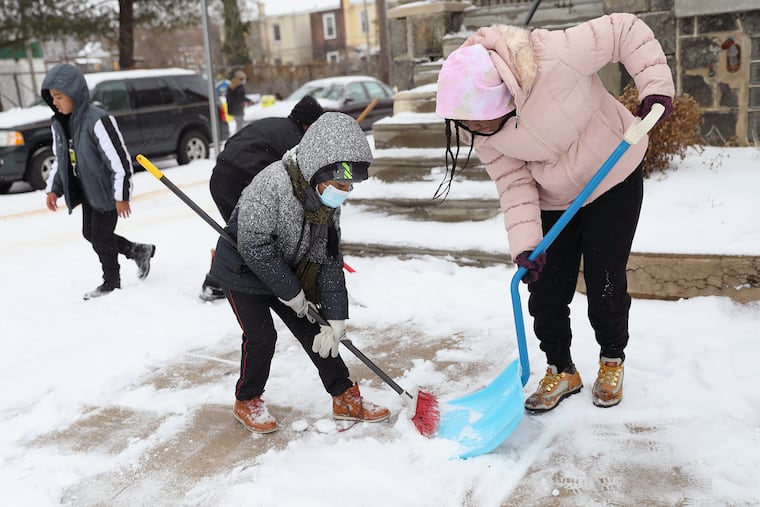3 tips to shovel snow safely, from a Philly cardiologist
Some people should leave the shoveling to others. But there are ways to make sure you get through the storm without injury.

Whether you see the snow as a workout opportunity or a nuisance, you should follow several general rules to avoid a heart attack.
The American Heart Association warns that the risk of a heart attack during snow shoveling may increase for some, and the combination of colder temperatures and physical exertion increases the workload on the heart.
» READ MORE: Philly's rules for snow clearing
Shoveling snow is a very heart-strenuous workout, and you may be surprised to find you can shovel for only a few minutes before noticing the strain. For those with heart conditions, and those who are not often active, it is important to take precautions before heading out to rid your property of snow. You should talk to your doctor about shoveling before a snowfall.
Here are three simple steps to prepare your body:
1. Stretch before going out. Shoveling snow is a total-body workout. To reap the benefits, do a few pre-shoveling stretches such as squats, arm stretches, and torso rotations for five to 10 minutes before tackling the driveway.
2. Protect your airways. Cold temperatures can cause breathing problems. Inhaling cold air frequently will constrict your lungs and airways, making it difficult for oxygen to enter the bloodstream. To avoid this, wear a bandanna or scarf over your mouth and nose.
3. Pace yourself and take breaks. Take a rest often so you don’t overstress your heart. The American Heart Association suggests paying attention to how your body feels during those breaks.
While you are shoveling, listen to your body. Some heart attacks are sudden and intense, but most start slowly with mild pain or discomfort. For men, the most common heart-attack symptom is chest pain or discomfort. Women are more likely to experience shortness of breath, nausea or vomiting, and back or jaw pain.
Snow shoveling is a very high workload for the heart. Those with known heart disease, the elderly, and those at high risk for developing heart disease should use good judgment and avoid this activity.
If you have any of these symptoms while shoveling snow, call 911 immediately.
Thomas Metkus is a cardiologist at Nazareth Hospital